For some Native Americans particularly those who belong to federally unrecognized tribes without reservations rodeos offer a way to stay connected to their culture and community
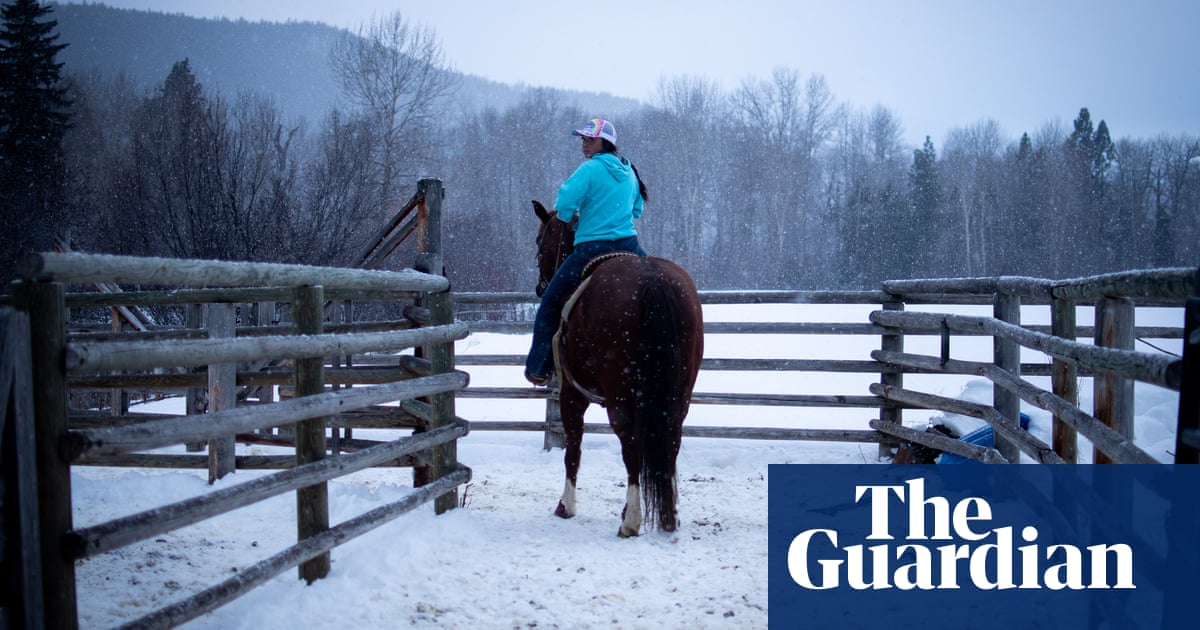
Rodeo is everywhere in Keira Simonsons life. Its in the 22-year-olds kitchen as a team picture pinned to the fridge. Its hanging in her bathroom as a horse-themed towel. Its decorating her truck floor as muddy boots with spurs attached. Its her weekends and her escape.
As an enrolled member of the more than 4,500-strong Little Shell Chippewa Tribe of Montana which was, until recently, federally unrecognized and without a designated reservation Simonson often felt removed from the larger Native American community and its culture. But rodeos have become her way of staying connected.
Its just something I crave to constantly be going to another one, she says.
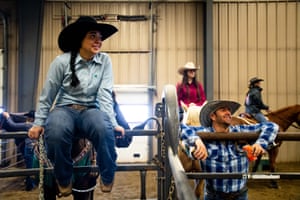
-
Top: Simonson and her brother, Buckshot, wait for her run at the Copper Springs Ranch rodeo, just outside of Bozeman, Montana. Below: Details of the rodeo are peppered throughout Simonsons life.
For the more than 400 other federally unrecognized, landless tribes in the US, communal spaces like rodeos have become integral.
Its what Circe Sturm, a professor of anthropology and the co-director of the University of Texas at Austins Native American and Indigenous Studies program, calls a pan-Indian space. It allows people to come together to experience a sense of being Indigenous.
When you have people who have had their land base disrupted, like the Little Shell community, then those spaces become very important, said Sturm.
Simonson, who has been riding since she was three years old, regularly competes in the Indian National Finals Rodeo tour (INFR), the main Native American rodeo organization in the US. Most recently, she won the womens barrel racing tour championship for the 2019 season.
In a barrel race, the rider and their horse burst straight out of the gate, kicking up thick, russet clods of dirt. Next they head for three barrels set up in a cloverleaf pattern around the arena, turning sharply around each before charging for the finish line at breakneck speed.
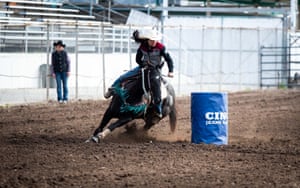
-
Keira Simonson rides her horse, Diesel, during a rodeo barrel race.
The INFR, formed in 1976, sanctions more than 700 rodeos a year across the US for people ages eight to 80. Women and girls involvement in Indian rodeo has been steadily increasing since the early 1990s, says a spokesperson for the organization. And while mainstream American rodeo has long been dominated by white contestants, Simonson says that recent years have seen more Native Americans competing at pro rodeos and other open and amateur rodeos not specifically designated for Native Americans.
In the remote north-eastern plains of Montana near the Canadian border, more than 30 miles from the nearest incorporated town, Simonson awakens most days around 8am on the family ranch. She shuffles to the stables to feed her beloved horse, Diesel, the first of several chores she and her brother, Buckshot Simonson, complete around the ranch.

-
Simonson, age four, on her fathers horse.
Diesel was once described by a rodeo announcer as the fastest black horse hed ever seen. But in the days leading up to competition, Simonson rests her horse to keep him fresh. The bulk of her preparation lies in the logistics travel plans, which she organizes in a color-coordinated calendar, and readying the trailer.
Inside the black and silver gooseneck unit, there are hay bales, five-gallon buckets and jugs filled with grain and water, saddles, brushes, combs and clothing. Theres even a bed made of wood chips a foot thick for Diesel to sleep on in the horse stalls.
He loves it. Some people will walk by and be like, Is your horse alive? recalled Simonson about Diesels sleeping arrangements in the trailer.
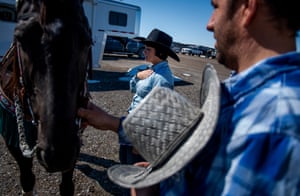
-
Top and bottom: Keira Simonson readies for competition by resting her horse and prepping her trailer.
At the INFR events, Simonson says shes developed a makeshift family, where she can joke around using Native humor sarcastic, loud and full of laughter. She can share her Native American experience, and learn about different tribes and practices along the way, including her own.
But even at those rodeos, she says she feels white compared with everyone else. Her mother is half Little Shell, half white, while her father is white. At other rodeos, she sometimes feels acutely aware of her darker skin and hair, and the stereotypes that come with her appearance.
They probably look at me and they think, Oh, shes just Native, said Simonson.
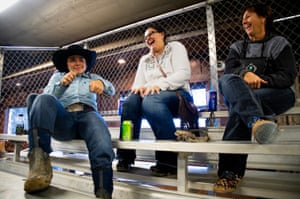
-
Simonson jokes around with her aunt, Billie Jo, and her mother, Judy, while waiting for her brothers run at the Copper Springs Ranch barrel race.
The Little Shell Chippewa, like many Native American tribes, have a complicated relationship with identity due to European colonization.
The Little Shell Chippewa are successors of the historical Pembina Band of Chippewa Indians a part of the Ojibwe, also known as the Chippewa, tribe whose land included more than 60m acres throughout the northern midwestern US and north into Canada. In the early 19th century, French men came from the north and married into many Ojibwe families.

-
Photos from recent races hang on the wall in Simonsons home.
The absence of culture and community are common among Little Shell people as a result of being landless, says Kim McKeehan, a Little Shell Tribal Council member and mental health therapist.
People dont have a place to practice cultural practices or build an economy. Those are the things that really create community, said McKeehan.
McKeehan explains that the lack of community can permeate into individuals sense of identity and belonging, too. But she says its also made Little Shell people incredibly resilient and independent.
Just because cultural traditions and languages were washed out of the mouths of our grandmothers and beaten out of our communities doesnt mean that theyre not ours still. We can reach back and get them.
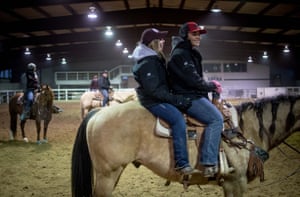
-
Simonson and Alexis Rose, a close friend, on horseback together at the first University of Montana rodeo team practice of 2019 in February, outside of Lolo, Montana.
The Little Shell do not yet have a reservation of their own, having refused to sign a land treaty with the US in the late 19th century that they believed to be unjust. But this state of limbo will soon change.
A bill that would provide 200 acres of reservation land was approved by Congress this year as an amendment to the National Defense Authorization Act (NDAA), and was signed into law by Donald Trump just before Christmas.
Its almost like its surreal, said the Little Shell chairman, Gerald Gray. It was a long, long road for us for everybody. Its a huge weight lifted off my shoulders.
The reservation will still take at least a year to materialize, said Gray. He added that theres no blueprint for newly recognized tribes, so they want to take their time to do it right.
My motto has always been the squeaky wheel gets the grease. I will always be loud and proud. Ill never stop until this actually gets done.
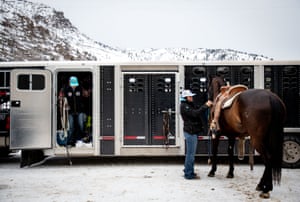
-
Simonson saddles up her barrel racing horse, Diesel, while her mother gets a bridle from their trailer.
Read more: https://www.theguardian.com/us-news/2019/dec/25/native-american-rodeo-montana-little-shell-chippewa


Recent Comments